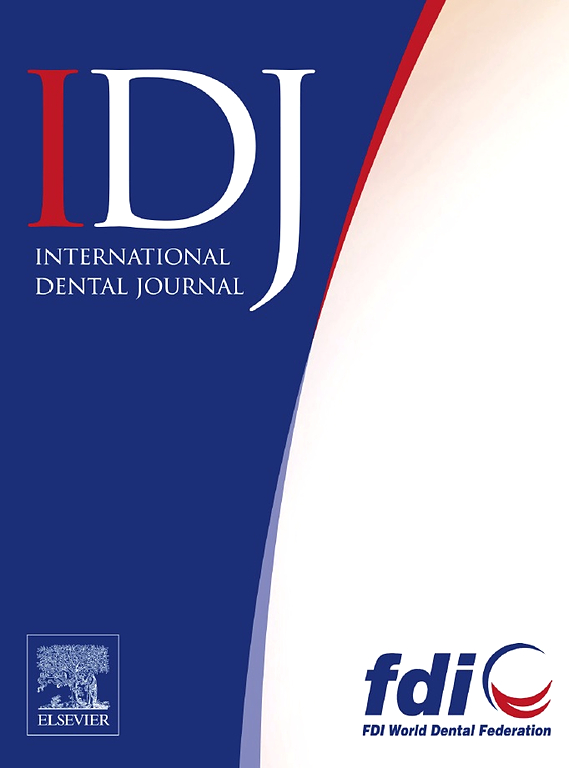atp1a1驱动的牙髓干细胞和内皮细胞间接触增强血管生成活性
IF 3.2
3区 医学
Q1 DENTISTRY, ORAL SURGERY & MEDICINE
引用次数: 0
摘要
目的牙髓干细胞(DPSCs)与血管内皮细胞(ECs)之间的相互作用对牙髓移植组织内功能血液循环的快速建立至关重要。这是一个涉及细胞直接接触和旁分泌信号的复杂过程。α1-Na+/K+- atp酶(ATP1A1)的跨膜结构域已被证明影响肿瘤血管生成。其在血管形成过程中调控DPSCs/ECs相互作用的作用尚不清楚。本研究旨在探讨ATP1A1对DPSCs/ECs通讯、血管网络形成的影响及其潜在机制。方法观察不同培养体系中血管结构的形成情况。系统分析周细胞样标志物和Na+/K+- atp酶相关基因和蛋白的表达。免疫荧光染色检测ATP1A1的定位。评估总蛋白和磷酸化蛋白,以确定和探索在共培养条件下激活的信号通路。抑制ATP1A1后,下游信号传导也被研究。结果与间接共培养相比,直接共培养加速了血管网络的形成,延长了血管网络的稳定性。在直接共培养系统中,ATP1A1的表达和smc特异性标记(α-SMA)水平显著增加,细胞核α-SMA定位和ATP1A1在细胞接触部位富集。蛋白分析显示共培养上清中活化的Src/AKT通路和上调的FGF-2/activin A分泌。ATP1A1抑制降低α-SMA表达,损害SMC分化。结论DPSCs-HUVECs直接接触可通过atp1a1介导的Src/AKT激活、驱动FGF-2/activin A分泌并启动SMC分化来稳定血管网络。这表明ATP1A1可能是髓质血管生成中周细胞样转变和血管微环境优化的关键。临床意义本研究为牙髓组织再生策略提供了依据。本研究结果对临床再生治疗中牙齿活力和功能的生物修复具有重要意义。本文章由计算机程序翻译,如有差异,请以英文原文为准。
ATP1A1-Driven Intercellular Contact Between Dental Pulp Stem Cell and Endothelial Cell Enhances Vasculogenic Activity
Aim
The interaction between dental pulp stem cells (DPSCs) and vascular endothelial cells (ECs) is crucial to the speedy establishment of functional blood circulation within the transplanted pulp tissue. It is a complex process involving direct cell contact and paracrine signalling. The transmembrane domains of α1-Na+/K+-ATPase (ATP1A1) have been shown to influence tumour angiogenesis. Its role in regulating DPSCs/ECs interaction in vascular formation remains unknown. This study aimed to explore ATP1A1 on DPSCs/ECs communication, vascular network formation, and underlying mechanisms.
Methods
The formation of vessel structures within different culture systems was examined. The expression of pericyte-like markers and Na+/K+-ATPase-related genes and proteins were systematically analysed. Immunofluorescence staining was performed to examine the localisation of ATP1A1. Total and phosphorylated proteins were evaluated to identify and explore the signalling pathways activated under cocultured conditions. Downstream signalling was also investigated after the inhibition of ATP1A1.
Results
Direct coculture accelerated vessel network formation and prolonged its stability compared to indirect systems. ATP1A1 expression and SMC-specific marker (α-SMA) levels significantly increased in direct coculture systems, with nuclear α-SMA localisation and ATP1A1 enrichment at cell-contact sites. Protein assay revealed activated Src/AKT pathways and upregulated FGF-2/activin A secretion in coculture supernatants. ATP1A1 inhibition reduced α-SMA expression, impairing SMC differentiation.
Conclusion
Direct DPSCs-HUVECs contact stabilises vessel networks via ATP1A1-mediated Src/AKT activation, driving FGF-2/activin A secretion and initiating SMC differentiation. This highlights that ATP1A1 may be critical for pericyte-like transition and vascular microenvironment optimisation in pulp angiogenesis.
Clinical Significance
This research informed strategies aimed at pulp tissue regeneration. The findings hold significant implications for enabling the biological restoration of tooth vitality and function in the field of clinical regenerative treatment.
求助全文
通过发布文献求助,成功后即可免费获取论文全文。
去求助
来源期刊

International dental journal
医学-牙科与口腔外科
CiteScore
4.80
自引率
6.10%
发文量
159
审稿时长
63 days
期刊介绍:
The International Dental Journal features peer-reviewed, scientific articles relevant to international oral health issues, as well as practical, informative articles aimed at clinicians.
 求助内容:
求助内容: 应助结果提醒方式:
应助结果提醒方式:


